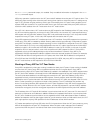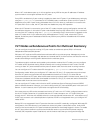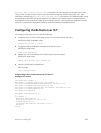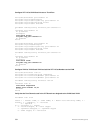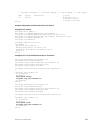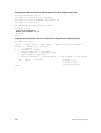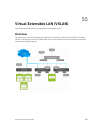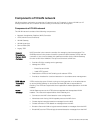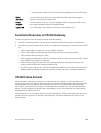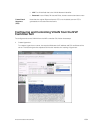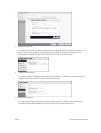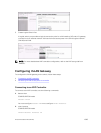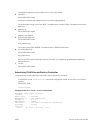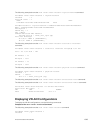• Advertises MACs learnt on south-facing VXLAN capable-ports to the NVP client.
VXLAN
Hypervisor
It is the VTEP that connects the Virtual Machines (VM) to the underlay legacy
network to the physical infrastructure.
Service
Node(SN)
It is also another VTEP, but it is fully managed by NSX. The purpose of SN is to be
the central replication engine for flooded packets
Legacy TOR It is a TOR switch, which performs routing or switching decisions.
Functional Overview of VXLAN Gateway
The following section is the functional overview of VXLAN Gateway:
1. Provides connectivity between a Virtual server infrastructure and a Physical server infrastructure.
2. Provides the functions performed by a VTEP in a virtual server infrastructure. The functions of a VTEP
are:
• VTEP is responsible for creating one or more logical networks.
• VTEP is responsible for identifying and binding a Port and VLAN to a logical network
• VTEP maintains MAC bindings to a VTEP.
• VTEP is typically managed by a network orchestrator. When the device functions as VTEP, VXLAN
from VMWare is the network orchestrator.
• VXLAN communicates with the VTEP using a standard protocol called OvsDb Protocol. The
protocol uses the JSON RPC-based message format.
• The VTEP acts according to the TOR schema defined by VMWare. The solution is very specific to
VMWare-based orchestration platforms and does not work with other orchestration platforms.
VXLAN Frame Format
VXLAN provides a mechanism to extend an L2 network over an L3 network. In short, VXLAN is an L2
overlay scheme over an L3 network and this overlay is termed as a VXLAN segment. VMs within the same
VXLAN segment communicate with each other through a 24–bit ID called VXLAN Network Identifier
(VNI). This 24–bit ID allows up to 16 million VXLAN segments to coexist within the same administrative
domain. The VNI scopes the inner MAC frame originated by the VM. This model has over-lapping MAC
addresses without traffic cross-over
VXLAN achieves L2 over L3 overlay using the tunneling mechanism. VTEPs are the end points of a tunnel
located within the hypervisor on the server that hosts VMs. The VXLAN frame format is shown in the
following figure:
Virtual Extensible LAN (VXLAN)
999



